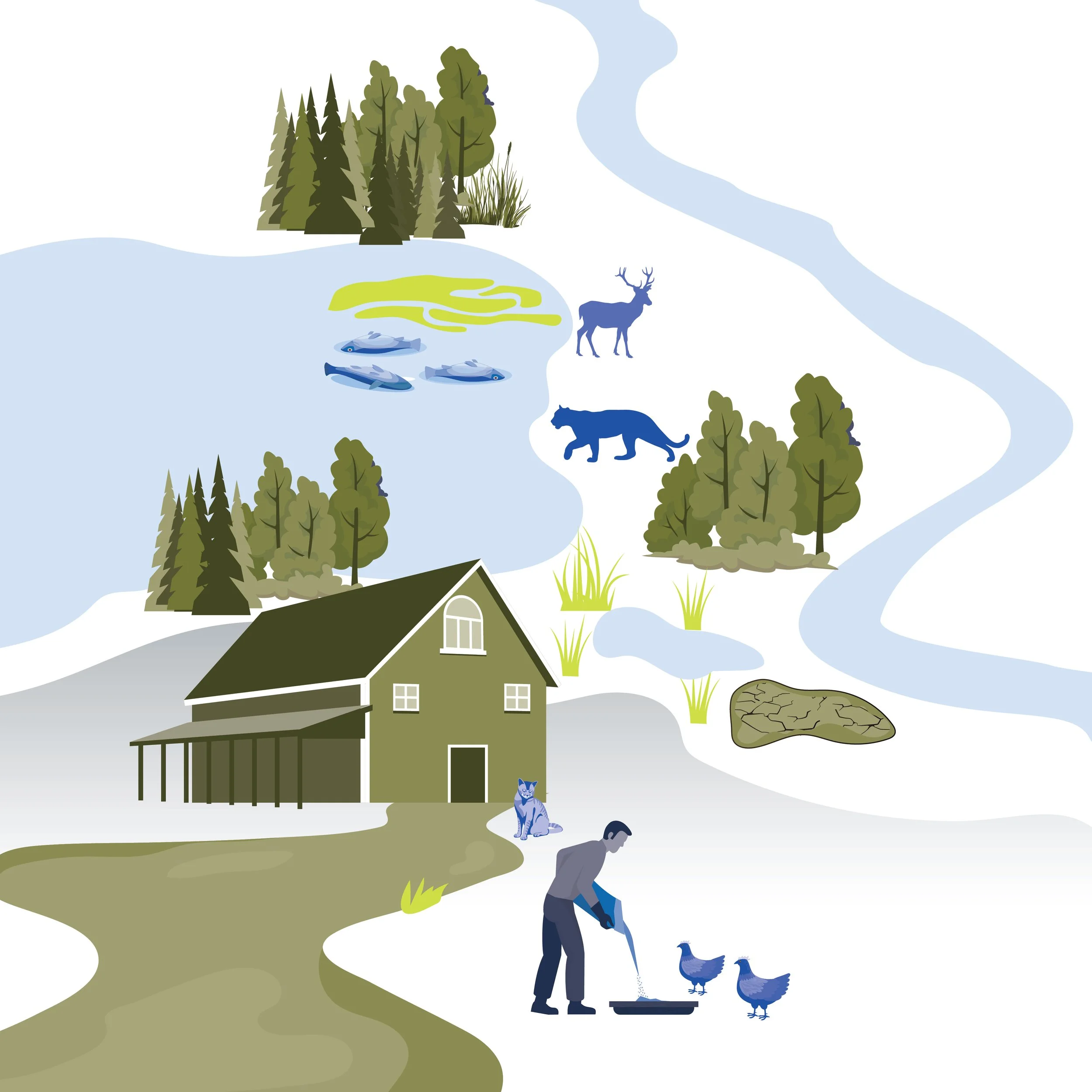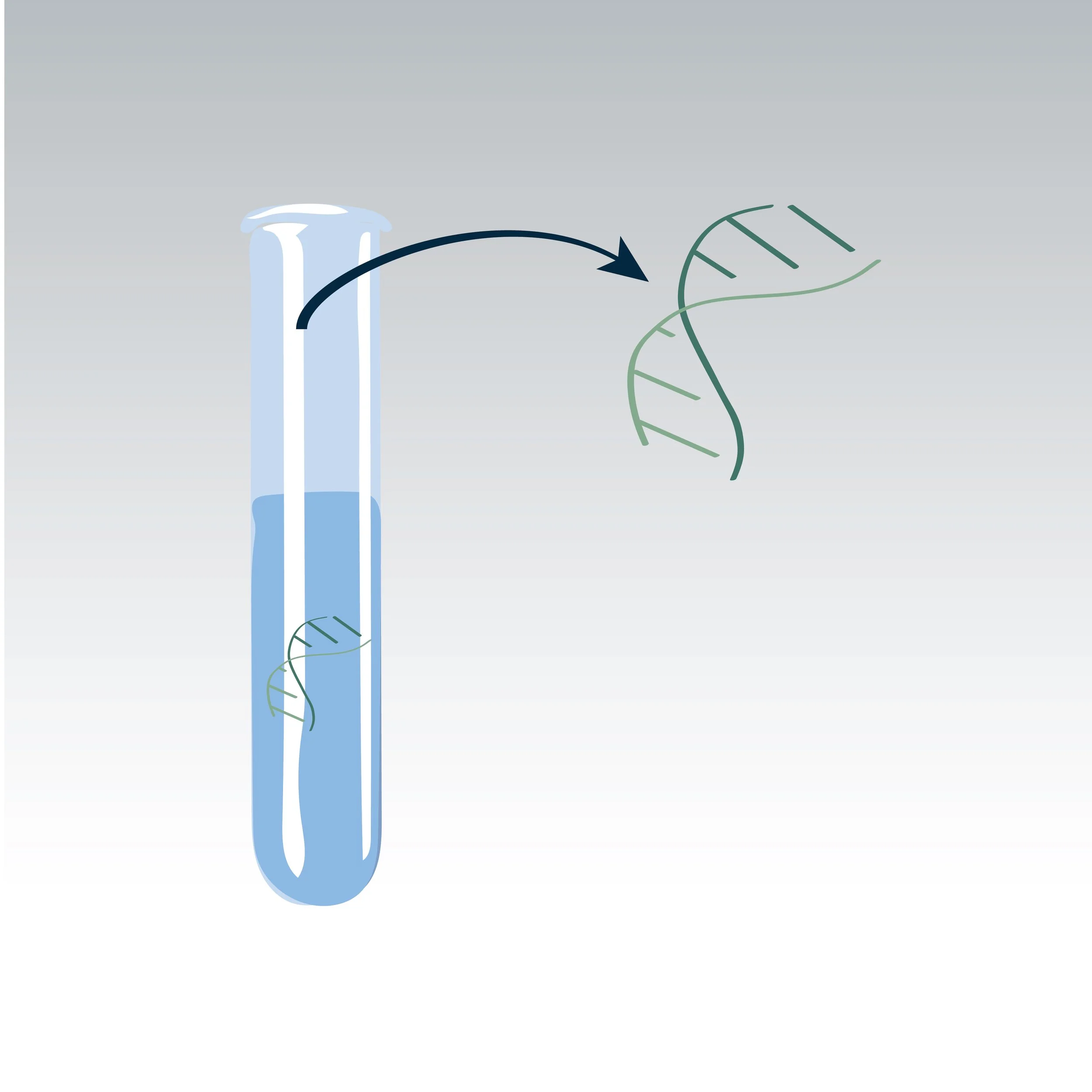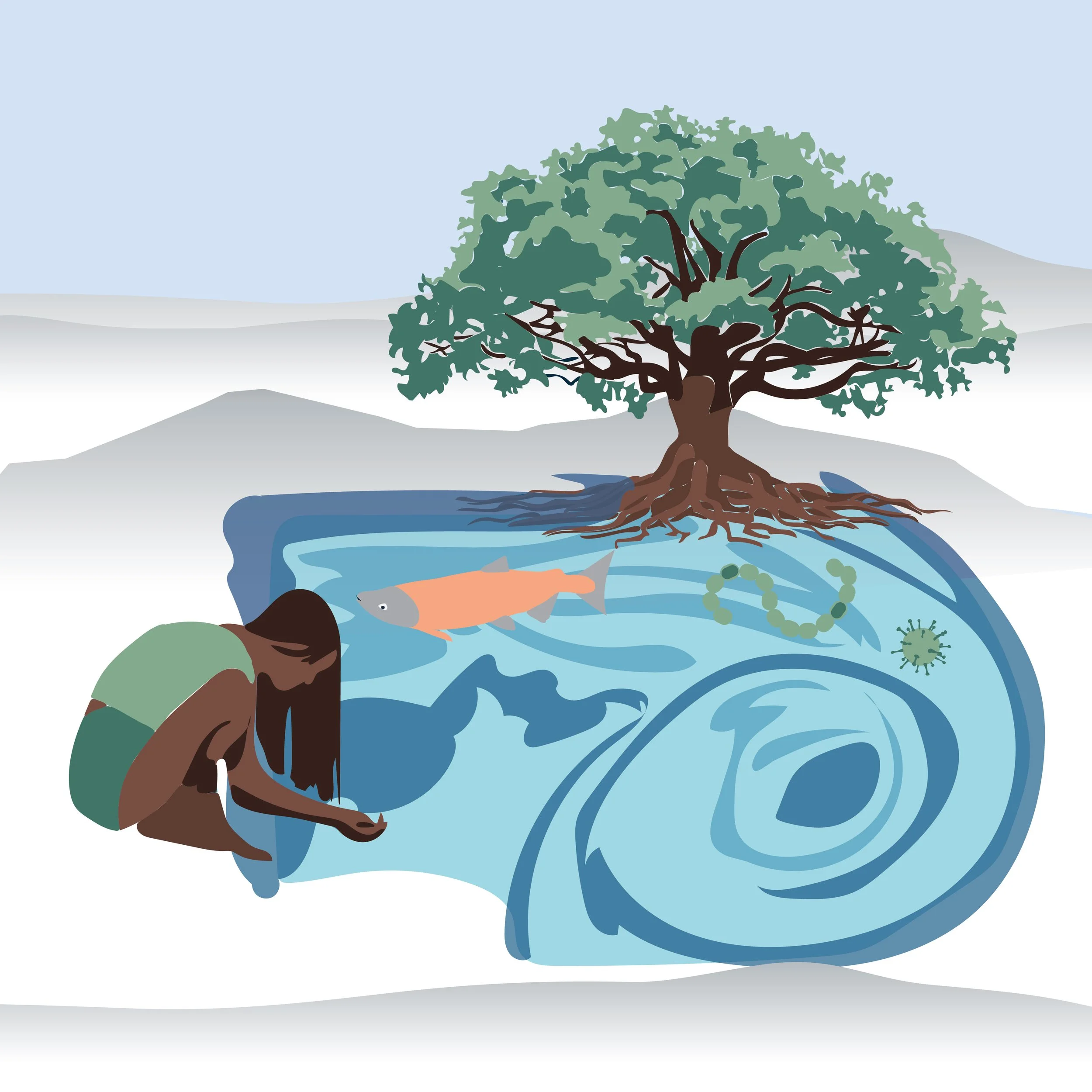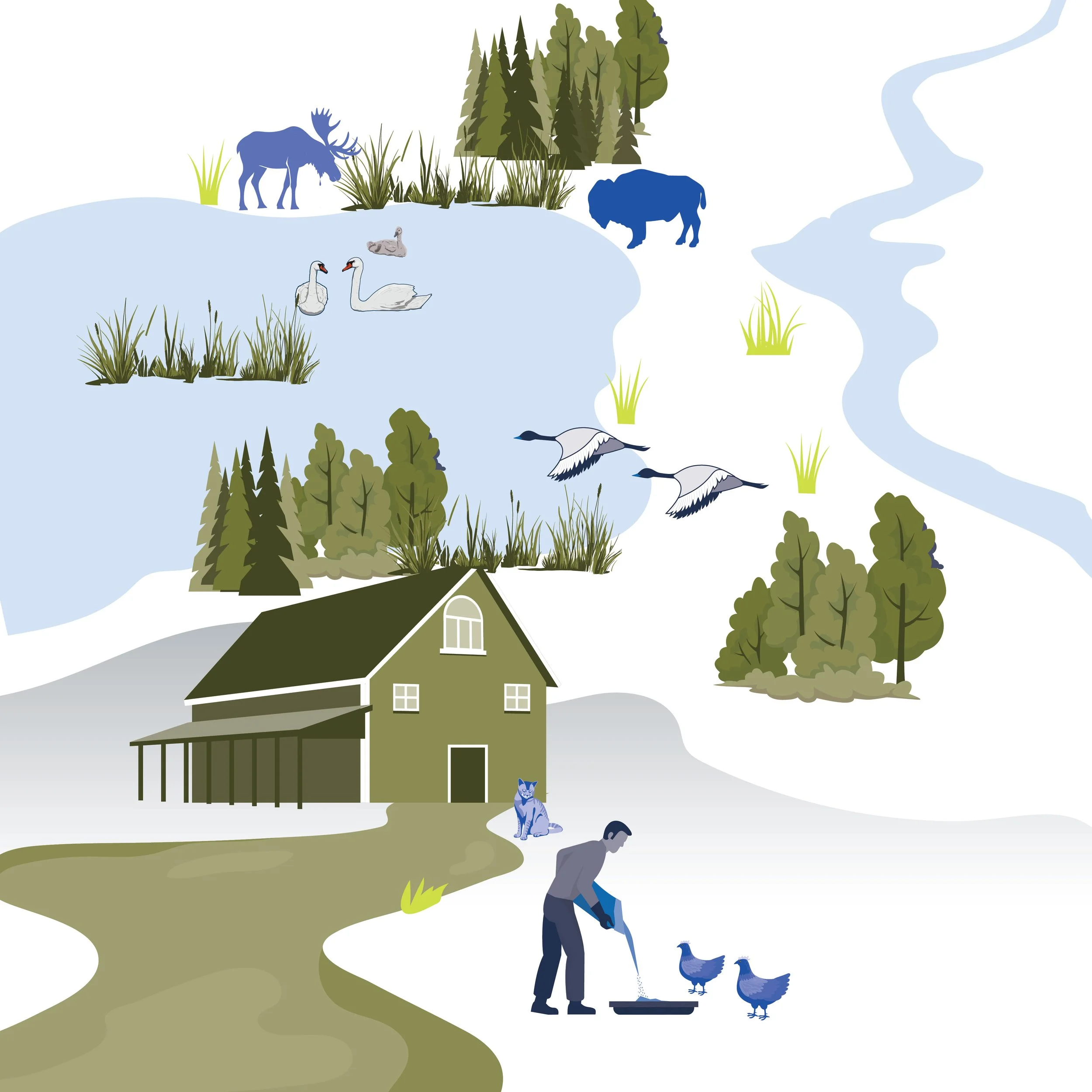Photo Credit: Peter Mather
ChùNet eDNA
Project
What does ChùNet mean? What is eDNA?
Chù (Water in the Southern Tutchone language) is life. Water ecosystems can teach us about ourselves and the world around us. When humans, other life and microbes interact with or live in water, they shed their genetic material - DNA and RNA. One way we can learn from water is by examining this environmental genetic material (hereafter referred to as eDNA). For example, we could use eDNA to determine which types and how many disease-causing microbes we leave in our wastewater.
What can eDNA monitoring detect?
eDNA monitoring can provide data about native and invasive species, changes in abundance of species that are important for subsistence harvest, toxic algal blooms in water, presence of avian influenza (H5N1, HPAI) and much more. This is done by detecting animal or microbial genetic material (DNA) in water from the environment.
How Does eDNA Analysis Work?
What is the ChùNet Project’s Purpose?
The ChùNet project has three aims:
Build a network of Northern, Rural, Remote and Isolated (NRRI) communities through engaging with community partners, to,
Conduct needs assessments to determine what challenges each community is facing and how eDNA monitoring could benefit each community,
Initiate deployment of training packages and training of community members so communities can begin monitoring eDNA in their own waters.
What types of data are used in eDNA monitoring?
The types of data collected will depend on the challenges the community is facing and the community’s priorities. Examples include environmental samples (water) for analysis, the date, time and location where samples were collected, and DNA that is copied from the collected water. Any data are owned by the community as per OCAP® and will include community observations integrated with genetic material from water, which will be integrated to tell a story.
How can eDNA monitoring help my community?
eDNA monitoring can be used by the community to make decisions about how to manage conservation efforts and protect the health of the people, animals, plants and waters.
PROBLEM
Change in distribution of species important for subsistence harvesting
SOLUTION
eDNA monitoring allows tracking of species important for subsistence harvesting, allowing communities to determine where animals remain in different seasons, and in some cases, estimate numbers. This can help communities to customize conservation programs, and monitor programs’ success over time.
PROBLEM
Spread of wildlife and zoonotic diseases (e.g., Increased spread of highly pathogenic avian influenza (HPAI, H5N1))
SOLUTION
eDNA monitoring can detect the avian influenza virus in wetlands where migratory birds rest during their flight. This early warning can help communities and wildlife managers respond quickly to reduce risk to people, domestic animals, and wildlife.
Integrating this information with wildlife health monitoring can help protect wild bird populations, domestic flocks, and community members, while also aligning with relevant H5N1 management requirements in a way that respects community protocols and authority.
ChùNet is co-led by Erin Gill, who is a University Research Associate (Junior Faculty) at Simon Fraser University (SFU), and Math’ieya Alatini, who is a member of the Kluane First Nation and Board Chair of One Yukon Coalition (OYC).
ChùNet is a project funded by Genome Canada and Genome British Columbia.
To learn more about ChùNet fill out the contact form below.










